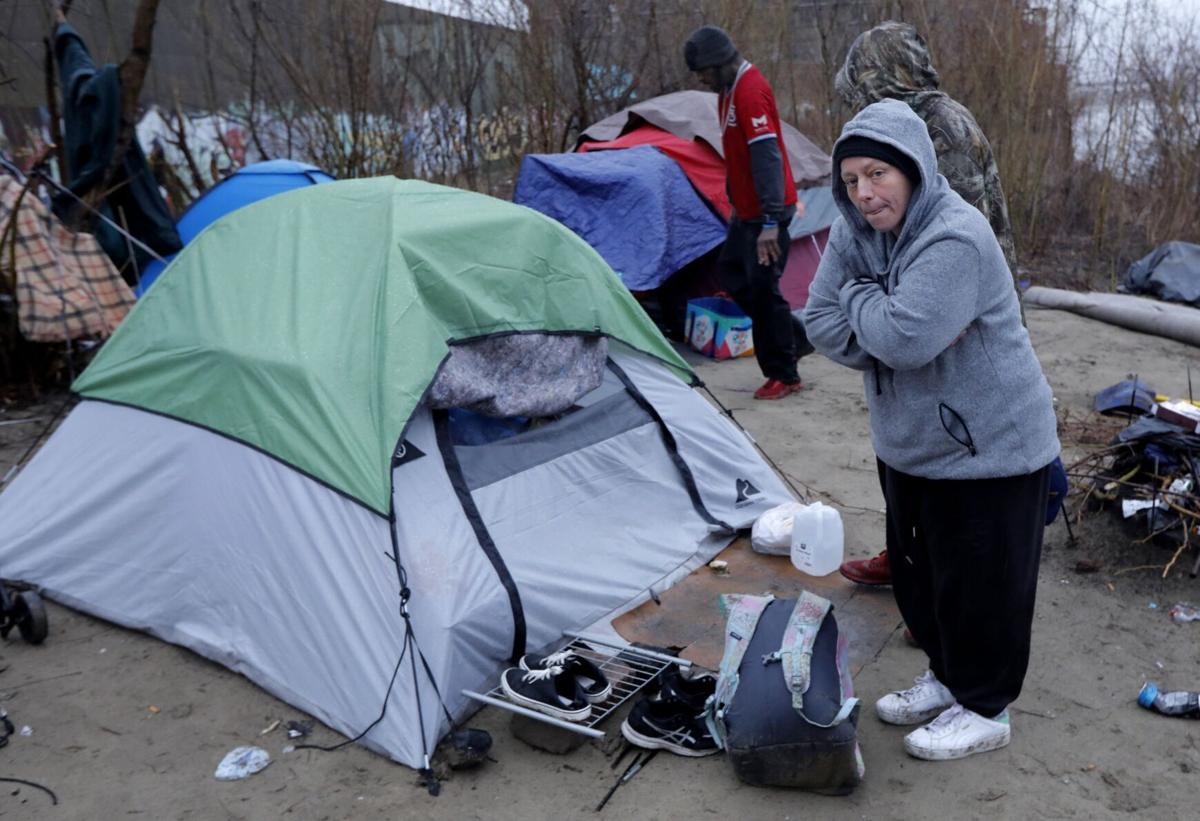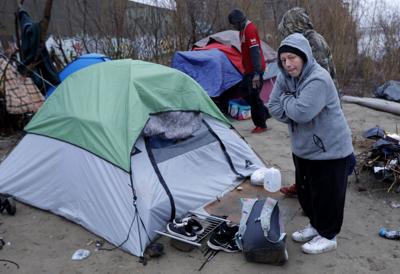Editorãs note: This is the second column in a two-part series about homeless services in ûÜî¢Ç¨û§. The first column was published Sunday.
ST. LOUIS ã There was always going to be tension in the creation of .
The nonprofit was formed in 2021 with the best of intentions: to improve the distribution of federal money to agencies that help homeless people get off the street and into housing. But in short order, the nonprofitãs creation would become one of those all-too-frequent ûÜî¢Ç¨û§ cautionary tales, with infighting and divisions threatening progress.
People are also reading…
Nonprofit leaders for years had complained that the flow of money from the federal government to the city, and then to the agencies doing most of the work, was slowed by bureaucracy and occasionally politics.
The Continuum of Care, an umbrella organization picked by the Department of Housing and Urban Development to oversee planning for homeless services in ûÜî¢Ç¨û§, decided to act. Its leaders created a new nonprofit, House Everyone STL, with the goal of having that agency replace the city as the middleman for federal money.
The plan was modeled after successful moves in other cities ã such as Houston and Dallas ã where homeless services were reorganized, getting all the agencies and civic leaders on the same page.
The woman who helped lead the charge for a new ãhousing firstã model in those two cities came to ûÜî¢Ç¨û§ about a year after the creation of House Everyone STL. Mandy Chapman Semple was brought here to help push for unity among the various agencies that serve the unhoused.
Change can be painful, Semple said at a fall 2022 speech at the Foundry.
ãIn every community, you have to find out what is the center of gravity that can bring the entire community together,ã she said.
ûÜî¢Ç¨û§ is not Houston or Dallas, or even Denver or Salt Lake City or San Francisco. The local homeless population ã about 1,200 people, according to last yearãs count ã is nowhere near the problem it is in other American cities. But like many things in ûÜî¢Ç¨û§, fractionalization ã by governments and nonprofits ã compounds the issue.
A few months after Sempleãs speech, some leaders in the homeless nonprofit world thought they were on the way to finding that center of gravity. The Continuum of Care had issued requests for proposal for a new ãcollaborative applicant.ã Thatãs the official name for an entity that puts together the annual proposal to HUD to secure $14 million in federal funding. The city of ûÜî¢Ç¨û§, which had always served that role, submitted a bid to serve as the applicant. So did the upstart nonprofit, created for that very purpose. And the board of Continuum of Care indeed voted to give the bid to House Everyone STL.
It was a new day in homeless services in ûÜî¢Ç¨û§.
Until it wasnãt.
In September 2023, HUD sent a letter with some bad news for the Continuum of Care. Because House Everyone STL had been created by the very leaders that awarded the new bid ã including chairman Anthony DãAgostino, the CEO of Peter and Paul Community Services ã the transaction was rife with conflicts of interest. HUD wouldnãt approve the move.
It was back to the drawing board. Both the Continuum of Care and House Everyone STL adjusted their boards and created new charter documents and conflict of interest policies. But the two agencies started to go in different directions.
ãDifferent people have had different opinions about how this process should unfold,ã says Tim Huffman, president of the House Everyone STL board. ãItãs like playing a board game when you canãt read the rules and you canãt see the board.ã
House Everyone STL ã led by Huffman and new executive director Samanatha Stangl ã believed it needed to be truly independent to bring together nonprofits, business leaders and government agencies for a plan to put more unhoused people in homes.
But some Continuum of Care leaders ã including DãAgostino, board member Shanna Nieweg and incoming chairman Toni Wade ã wanted the new nonprofit to be under the control of their group.
The dispute played out at public meetings and in a series of tense emails. One of the messages was sent by Wade on Nov. 22, 2023 to the board of House Everyone STL; the email notably wasnãt copied to Stangl, the executive director.
ãOver the past six months, weãve noticed a misalignment between our boards,ã Wade wrote.
She was the vice chairman of the Continuum of Care at the time. A month later, she would become the chairman, even while being under investigation by the city for past billing issues.
Wade wrote that House Everyone STL was failing to ãdeferã to the Continuum of Care, and that the new nonprofit didnãt understand its role.
The email, obtained by the Post-Dispatch in a Sunshine Law request, didnãt go over well. Board members of both organizations were offended that Wade sent such as strong missive, and city leaders noticed it as well. A few days later, Adam Pearson, the cityãs Department of Human Services director, alerted HUD to the issue.
ãToni expresses several grievances here with (House Everyone STL),ã Pearson wrote, ãsome of which indicate to me that she still does not fully appreciate conflict of interest.ã
Pearson explained that House Everyone STL had taken steps to minimize any conflicts of interest on its board and tried to collaborate with other groups.
ãThese changes, among others, are not welcomed by Toni Wade,ã Pearson wrote.
In December, with much of the Continuum of Care membership not privy to the underlying tension, the organization elected Wade as the new chairman. It also chose House Everyone STL as both the new support agency for the Continuum of Care and as the collaborative applicant, replacing the city.
It was short-lived progress. By February, with tension growing, House Everyone STL pulled away from its relationship with the Continuum of Care, even as Stangl and her board continued to collaborate with the city and other nonprofits. For now, the city will continue to be the agency the develops the regional plan to spend the HUD money.
ãOur neutrality is critical to our ability to work with all partners and coalesce around proves strategies that are not influenced by potentially funded agencies,ã Stangl told me in an interview.
That view of the role of House Everyone STL ã if it is ever to become that ãcenter of gravityã it was intended to be ã is shared by some longtime members of the Continuum of Care.
ãYouãve got to have an independent body where no board members are vested in any individual grant,ã says Tom Mangogna, CEO of Magdala House, one of the larger homeless services providers in the region.
So what is the future of the Continuum of Care and its relationship to House Everyone STL?
Right now, it doesnãt look good. But that hasnãt stopped House Everyone STL from forging relationships with business and civic leaders and many of the nonprofits that do the nitty-gritty work of battling homelessness.
Huffman chooses to be hopeful. ãI truly believe that weãll get there in the end,ã he says. ãJustice is what love looks like in public, and love takes time.ã
Stangl and Pearson have talked about building the sorts of relationships ã in ûÜî¢Ç¨û§ County and surrounding counties ã that have long been difficult in this region. Both also continue to talk to Semple and her firm about the possibility of helping everyone in ûÜî¢Ç¨û§ get on the same page.
House Everyone STL is no longer the agency that was envisioned by its founders. But it might have become something better and moved ûÜî¢Ç¨û§ closer to finding its center of gravity.
Although the homeless encampment outside City Hall started around July, it wasn't until September that the amount of tents quickly grew. After the mayor's office announced the camp would be cleared on October 2, there was uncertainty of how much longer the encampment would be allowed to stay. Video by Allie Schallert, aschallert@post-dispatch.com





















